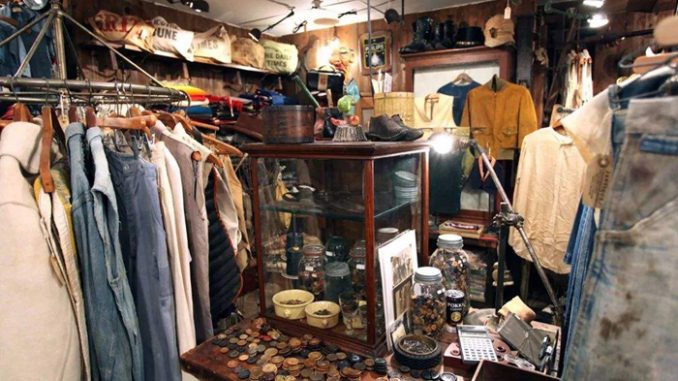
Vintage clothes. This concept originated in Japan at the earliest and refers to those older clothes that have more than 30 years of history and have the characteristics of their age and still have aesthetic value. “Vintage” is also a proper noun from making wine, and specifically refers to the old wine after 30 years (best drinking period), that is, only through the test of time can we become a classic product of existence and become “vintage.”

After the war, Japanese young people’s admiration for hippie and pop culture in Europe and America led to many imported European and American styles of second-hand clothing being respected by young people who pursued fashion in Japanese society at that time. Thanks to this truly “foreign-made” attribute, young Japanese who love rock, hippie and other styles at that time have the satisfaction of truly infiltrating the cultural essence they are pursuing.
However, “vintage clothes” is not simply second-hand clothing. The contemporary meaning it contains now seems to be more of a “museum” and The existence of “uniqueness.” Many of the garment manufacturing processes and fabrics are now impossible to reproduce. Therefore, many people who love vintage clothes will emphasize that “we are wearing history, not old clothes.”

How does the vintage clothes trend evolve from its own wear to a vintage clothes shop and extends from one country to the world?
In fact, as mentioned above, the pioneering culture in Europe and the United States has a huge impact on the spiritual world of modern Japanese young people. Especially for a Japanese society that likes the “popular wave”, if a new thing has a spark, it will inevitably spread quickly.
At first, for the love of certain brands or styles, many stores will deliberately go to Europe and America to find authentic products. Established a unique style of the store, with the expansion of the business, gradually established its own style of the chain vintage clothing stores have begun to appear.
The relationship between the vintage clothes culture and the Japanese:
Japanese people have been advocating the virtue of economy since the war. At that time, many clothes can be used as heirlooms. The handicrafts and apparel industry in the 1950s and 1960s actually emphasized a kind of “toughness” in the selection and tailoring of fabrics. It is this texture that can give people a sense of history. Therefore, many fashion-conscious Japanese people prefer to choose quality vintage clothes compared to the fashionable clothing brands that are nowadays very popular.

Vintage clothes characteristic of Shimokitazawa:
There are many vintage clothes shops here. Shimokitazawa is different from other parts of Tokyo. There are no high-rise buildings, and there are only some interesting and low-rise buildings. Since the 1960s, Tokyo’s hippies have begun to move to this area. And now there are still some of the unruly breath. Numerous vintage clothes stores and old furniture stores seem to remind people not to forget the golden years that passed.

Vintage clothes collocation skills:
Putting “old” wear “new” is also an interesting topic.
Because the collocation of “old times” is a very pass through existence about “now.” Maintaining a unified worldview is a very important collocation point. For example, a favorite brand and a certain age, a movie, an old star, and a place you want to live in, etc. can all be the inspiration for your collocation.

Leave a Reply